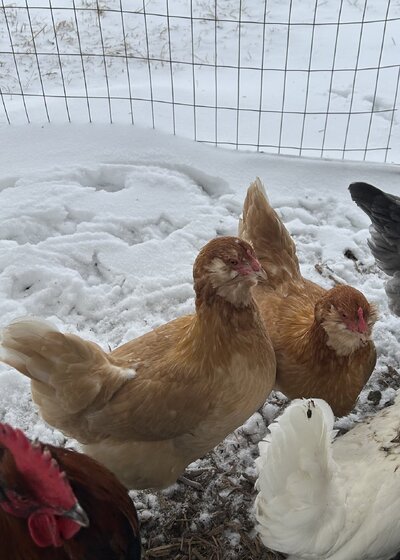HAPPY NEW YEARThe gene that causes shanks clear of slate color is sexlinked. Crossing a slate-shanked male to a 'clear'-shanked female should produce 'clear'-shanked male offspring and slate-shanked female offspring. The caveat to that is that this is not always very apparent pending other genes that can impact skin color.
Dominant white is one of those genes. Both your ISA browns and your White Leghorns should have dominant white. In your next post with the lighter wheaten chicks, they look to have inherited that dominant white gene, causing them to be that lighter wheaten color. Dominant white is good at blocking out black pigment in feathering, but does not impact the red/gold pigment much at all. This is why ISA browns, despite having the gene, are primarily red anyway. Dominant white also tends to wash out skin pigments. That is why the lighter wheaten chicks' slate shanks look a lot more washed out. Those chicks should be females.
I've only just noticed this post is from October and the OP hasn't been seen since early December, but heck, I typed all this out and it might help someone, so here you go.
Thanks for typing "all that out"!
Learning genetics to is so interesting & seems so much more complicated in birds than in equine!! Just less expensive to "play" & culls are edible.
Thank you for adding to my education.







